Murchison Radio-astronomy Observatory News

August-September 2018 issue

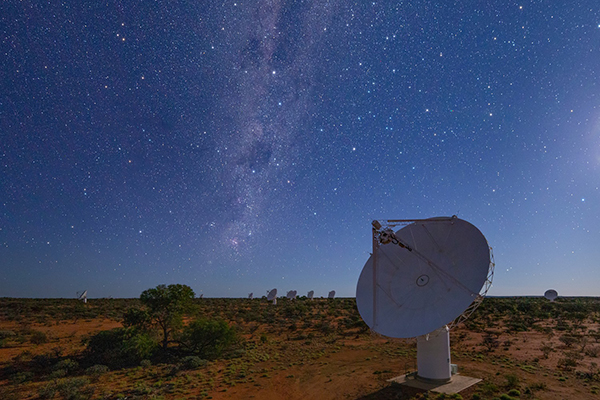
Welcome to the first edition of CSIRO's Murchison Radio-astronomy Observatory Newsletter - MRO News!
The MRO is operated by CSIRO, Australia's national science agency. CSIRO operates a range of national scientific facilities on behalf of the Australian community, which serve our national interests and enable Australia to participate in global science and technology activities.
The instruments and infrastructure at the MRO, build on Australia's outstanding achievements in radio astronomy research and development during the past 60 years. CSIRO's Australian Square Kilometre Array Pathfinder (ASKAP) telescope and the Curtin-led Murchison Widefield Array, are setting new benchmarks in design and data processing technology, paving the way for Australia to host the Square Kilometre Array - a global project to build the world's biggest radio telescope.
We operate the MRO with support from the Australian Government, the WA State Government, and by agreement with the Wajarri Yamaji, and MRO activities are supported by a wide range of partnerships.
Of particular importance are our local partners in the Mid West community. In response to requests from people and businesses in the Mid West community, for information about ‘what’s happening’ on site, we’re delivering the 'MRO News'.
In parallel with the MRO News, CSIRO has arranged for a number of visits to the MRO that have enabled organisations, businesses, and local residents within the Shire to learn more of what is happening on the MRO. More information on these visits is available under ‘Event’s’ below.
We’ve also invited contributions to the MRO News from our astronomy partners, Curtin University, which leads the MWA telescope and the Australian SKA Office, which co-ordinates Australia’s involvement in the Square Kilometre Array (SKA).
As this is the first edition, it's quite a long one and includes a bit of background information and we anticipate that future issues will be shorter, with snapshot updates about the MRO.
If you’d like to send feedback about the newsletter, or find out more about something, please send me an email at kevin.ferguson@csiro.au.
Enjoy the read and we look forward to your feedback!
Kevin Ferguson, CSIRO

The Square Kilometre Array (SKA) project is progressing well and the organisation recently welcomed two new members - Spain and a French consortium of research institutions and industry groups.
This brings the current SKA membership to twelve–Australia, Canada, China, France, India, Italy, the Netherlands, New Zealand, South Africa, Spain, Sweden and the United Kingdom; pulling together some of the world’s best scientists, engineers and policy makers.
This is exciting and understandably challenging for the SKA Organisation, based near Manchester, UK, which has the complex task of overseeing the design and construction of two telescopes, by 12 member countries, across two continents!
Work is underway to establish the SKA Observatory, the Inter-Governmental Organisation that will be the governing body for the SKA project into the future. This will be formalised through an international treaty that Australia intends to sign, with this expected to happen later this year.
Meanwhile there is plenty of momentum. The telescope engineering design work, being delivered by nine international teams (also known as consortia), is being assessed by an independent panel of experts. This process of Critical Design Reviews (CDRs) is a very thorough and rigorous phase of the project. Each group must prove their design suitability and effectiveness and also show that what they have designed can be built and operated within budget.
The telescope design requirements are broken up into nine parts, called sub-elements, including the antennas, digital signal processing, telescope control software, supercomputers, and observatory infrastructure (for both Australia and South Africa). This CDR timetable will continue through to mid-2019, with the construction phase expected to commence in mid-to-late 2020.
Here in Canberra, the Australian SKA Office (ASKAO) is focused on preparing Australia to host the SKA telescope. This requires us to work with partners in the West Australian Government, CSIRO, the International Centre for Radio Astronomy Research (ICRAR) and a range of international governments and organisations. A key element of this work is understanding and promoting the interests of all our stakeholders. This includes people from the Mid-West region and for details on recent meetings, please read the community interactions section in this newsletter.
I’ll be back in Geraldton later in the year for an SKA Regional Stakeholders Group meeting, which will provide further updates on these and other issues of interest. Three of my team members are also looking forward to supporting activities at the first MRO Open Day in October – more about this later in the newsletter.
David Luchetti, Australian SKA Office
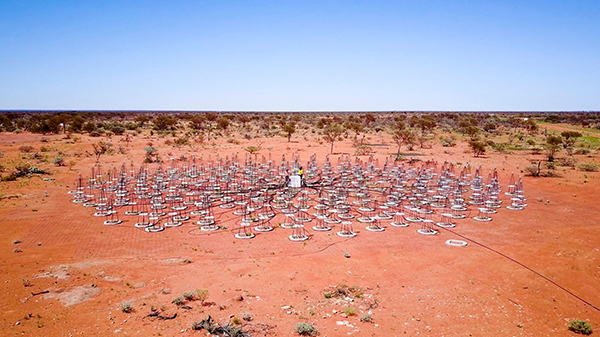
You may have seen various images of what the SKA will look like in Australia. The telescope being designed for Australia is called SKA1 Low, and consists of up to 132,000 separate two metre tall antennas, spread over the Boolardy station.
These antennas are grouped in clusters of 256, across a 45 metre diameter circle called a station. There is a total of 512 of these antenna stations. The innermost section (called the core, is about one kilometre in diameter) has a cluster of 212 of these stations and the remaining stations are grouped in clusters, spaced every few kilometres, spreading out along three spiral arms. (See the map of Boolardy station later in the newsletter.)
Each antenna needs a small power supply and fibre connection, so there is a complex power and fibre distribution plan, which will bring all the signals back to a central processor facility, located near the telescope centre. This building will be similar to the ASKAP control building but about twice the size.
Testing and refinement of the antenna design is currently underway at the MRO, using a prototype called the Aperture Array Verification System 1 (AAVS1). This work package is being completed by one of the nine SKA consortia, known as the Low Frequency Aperture Array (LFAA) consortia.
LFAA team members are from ASTRON in the Netherlands, INAF in Italy, Cambridge University and our very own International Centre for Radio Astronomy Research (ICRAR).
Ant Schinckel, CSIRO
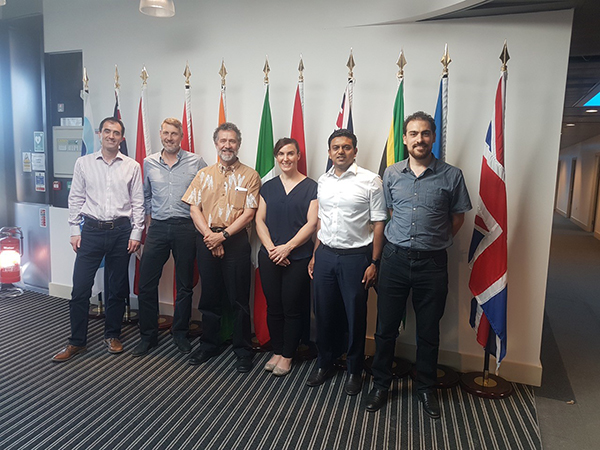
Infrastructure Australia (INAU) is also one of the nine consortia tasked with designing some of the elements of the SKA. It is led by CSIRO, and includes Aurecon (a major engineering design company that worked on the ASKAP infrastructure) and RLB (quantity surveyors).
Over the past four years, INAU has been working on designing the infrastructure needed for the SKA on site here at the MRO. This includes everything from the tracks and roads, to the power and fibre distribution, water and sanitation, new buildings, etc.
Overall the Infrastructure requirements are similar to that for ASKAP – and are closely modelled on that very successful design. The new SKA control building will be about twice the size of ASKAP’s and situated about 18 km southwest of the ASKAP building, close to the centre of the SKA1 Low array.
The consortia team has been focusing on meeting all the requirements for Critical Design Review. We travelled to Manchester for our CDR meeting in June – after producing a total of 620 individual documents!
The review went very well. The INAU team went through some scenarios on the last day which was very useful and produced some new information which will influence the final design – for example, around aspects of which equipment should be connected to which Uninterruptible Power Supply in an emergency when you also have a power outage.
The INAU team was very pleased to pass CDR, conditional on completing some agreed actions recommended by the review panel, which we expect to have finalised this quarter.
The team picture to the right shows the INAU team at CDR in Manchester, which consisted of myself (CSIRO, Consortium Lead), Rebecca Wheadon (Aurecon, Project Manager), Shandip Abeywickrema (Aurecon, Project Engineer), James Massoud (Aurecon, Power Engineer), Matt Burley (Aurecon, Civil Engineer), Mark Bendotti (RLB – Quantity Surveyor) (noting Graham Allen attended via videoconference).
But this is just the tip of the iceberg – there have been over 90 people who have been involved in developing the Infrastructure Australia design material!
Ant Schinckel, CSIRO
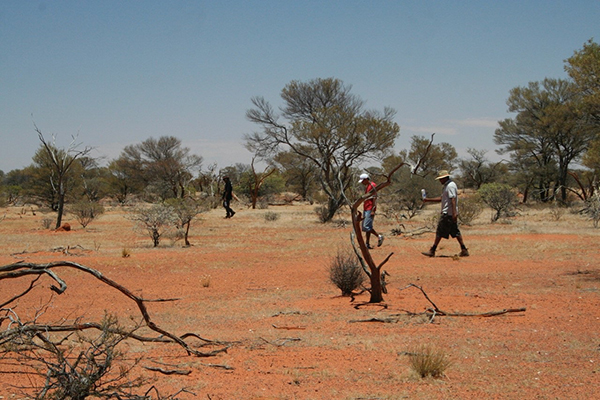
Many of you will have heard about the ongoing negotiations for a new Indigenous Land Use Agreement (ILUA) which is required before the SKA can go ahead. The existing ILUA from 2009 is only valid for the ASKAP, MWA and EDGES telescopes and a larger area is required to accommodate the SKA.
Since 2016, representatives from the Australian SKA Office in the Department of Industry, Innovation and Science (DIIS) (the lead agency in this area) and CSIRO, have been meeting with the Wajarri Yamaji negotiating team; along with the relevant legal representatives for each group.
Significant progress has been made, with an in-principle agreement reached in December 2017. It is expected that along with community consultation activities, this will be finalised by mid-2019.
You may also have heard CSIRO is in negotiations with the WA State Government for a new lease for the Boolardy Station. This new lease will absorb the existing MRO back into Boolardy and the Boolardy lease will be changed from a pastoral lease to a crown lease, with radio-astronomy having primacy on the land use. A significant onus will be placed on CSIRO in the areas of land management and rehabilitation.
Heritage Surveys
Recently, we have commenced the Aboriginal heritage surveys for the SKA.
We have engaged the approved Heritage Service Provider to commence these surveys. They are implemented by having a number of Wajarri people perform a ‘walkover’ of the land that is proposed for the project and could be disturbed. This typically takes the form of 8-10 Wajarri people, an archaeologist, an anthropologist and a CSIRO staff member, walking over the area in line abreast formation looking for evidence.
At the time of writing (September 2018) we are about half way through this process.
Ant Schinckel, CSIRO and David Luchetti, Australian SKA Office

During recent weeks, there has been a number of regional meetings relating to the SKA.
On Wednesday, 8 August, Ant Schinckel, Kevin Ferguson, Brett Hiscock and Carol Wilson (CSIRO), along with Derek Perez (JTSI) attended a meeting organised by Adam Murszewski from the Mid West Development Commission (MWDC – an agency of the WA Dept of Primary Industry and Regional Development) along with MWDC members and Shire of Murchison residents (Emma Foulkes-Taylor and Andrew Whitmarsh), to discuss a range of topics. The primary purpose was to discuss communications for the Settlement, understanding the Radio Quiet Zone (RQZ), stock control and fire management protocols. These discussions were positive, and will continue on a regular basis.
The next day, Jerry Skinner (ASKAO) led an afternoon briefing from ASKAO, CSIRO (Ant Schinckel) and Curtin University (Tom Booler) for Wajarri Yamaji businesses, on possible contracting opportunities for the SKA. This followed a briefing held in April for local businesses, hosted by the Mid-West Chamber of Commerce and Industry (MWCCI). This briefing covered the current status of the SKA and possible procurements and contracting opportunities that may come out of it.
At this point, we can’t be very definitive about procurement, as it depends on the final procurement policy and the final telescope design which are yet to be finalised. However we do expect West Australian businesses to be well placed to secure infrastructure-based contracts (e.g. buildings, roads and tracks, accommodation, fencing, power and fibre trenching, etc.). As ever, any new information will be provided to interested local and regional businesses as it becomes available.
On Wednesday 22 August, CSIRO, ASKAO, JTSI (WA Dept of Jobs, Tourism, Science and Innovation) along with WA Main Roads, met with Shire residents at the Murchison Settlement. Again, a wide range of topics were discussed with an emphasis on the impacts of radio-astronomy on the region, radio quiet protection, future technologies in pastoralism, land management etc. We have a number of actions to follow-up from that meeting.
CSIRO and ASKAO thank the Shire for hosting us and providing the opportunity to meet with the residents.
Ant Schinckel, CSIRO and David Luchetti, Australian SKA Office
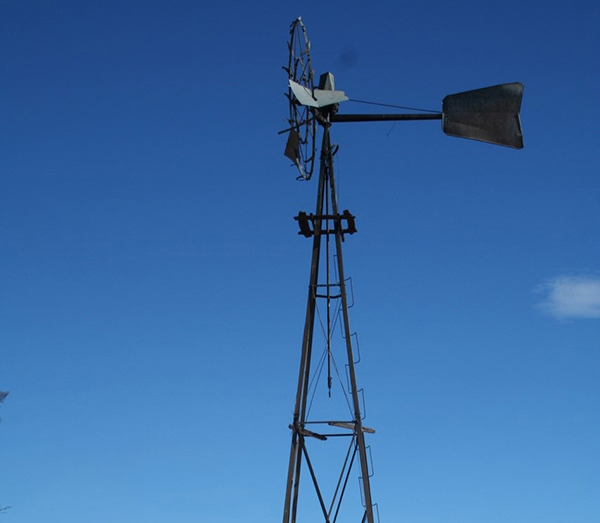
Boolardy Water Points
CSIRO has destocked the cattle from Boolardy Station and considered the rationalisation of water point use and distribution as part of the Station development plan. A coordinated shut down of water points will occur shortly to leave approximately 10 strategically located watered areas. Regular inspections of the water points that are turned off will occur in the weeks to months after the closure of the water points. The paddocks with operational water points will include West Dullah, New Number, House, Woongoon, Longpool, Billaby, Minnecordie, Homestead Area, Petermulla, Boordalla, Cardewandabubba and Cundaman.
Potable Water
CSIRO is proposing to install new equipment at the Boolardy accommodation camp in support of the drinking water systems at the site. Proposed as a future work activity, the requirement is to excavate and install pipework and associated infrastructure to control and transfer bore water from two existing bores to the existing tanks and treatment plant within the Boolardy accommodation camp. Details will be announced later.
Boolardy Services Contract
The CSIRO Boolardy Services Contract will expire in July 2019. During September 2018, CSIRO will be releasing a Statement of Requirements (SOR) to the Wajarri Yamaji Business Directory to obtain Expressions of Interest (EOIs) and determine both the capacity and capability within the Mid West Indigenous Business Community to successfully deliver against this contract. Upon receipt of suitable EOIs, and at a date yet to be determined, CSIRO will release a restricted Request for Tender (RFT) to suitably identified businesses.
Jeff Arbon, CSIRO
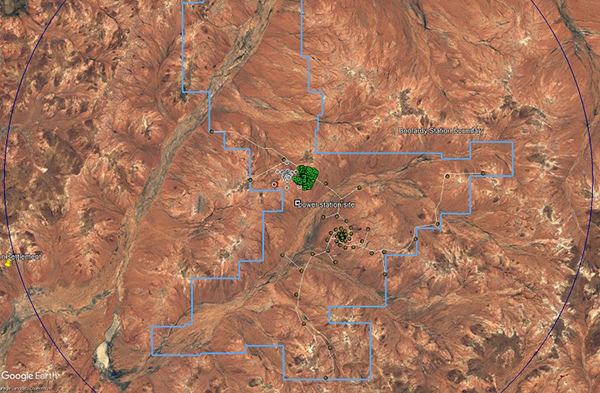
Limiting radiofrequency interference is very important to enable the sensitive observations undertaken by telescopes at the MRO. Interference can be caused by radio transmitters (such as mobile phones, CB radios or WiFi devices) as well as by electrical equipment (such as power tools and motors). The amount of interference these cause at the telescope location depends on the distance as well as the characteristics of the individual device.
In general, the interference from electrical equipment is of a lower power than that from radio transmitters, and so is only a concern at shorter distances.
Some substantial radio transmitters, such as new CB repeaters, require individual licensing by the ACMA. In the Radio Quiet Zone (RQZ), these require formal consultation with CSIRO.
Consumer-grade low powered transmitters, such as portable CB units, UHF mobile radios, satellite phones, WiFi and Bluetooth, don’t require individual licensing. The current level of use of these systems is acceptable under the RQZ rules. However, if new equipment or expanded use is planned, we encourage you to contact the CSIRO in advance to discuss the implications and perhaps to consider alternatives.
Mustering and other day-to-day pastoral activities are acceptable under the RQZ rules. However, we do request that you notify us of mustering within about 30 km of the MRO so that we can plan around your work. Further, the RQZ rules don’t apply to normal household electrical appliances or pastoral vehicles.
Use of radiocommunications during an emergency is always allowed and takes priority.
CSIRO welcomes the opportunity to discuss with you if there are specific concerns or questions about the radio quiet regulations.
Carol Wilson, CSIRO
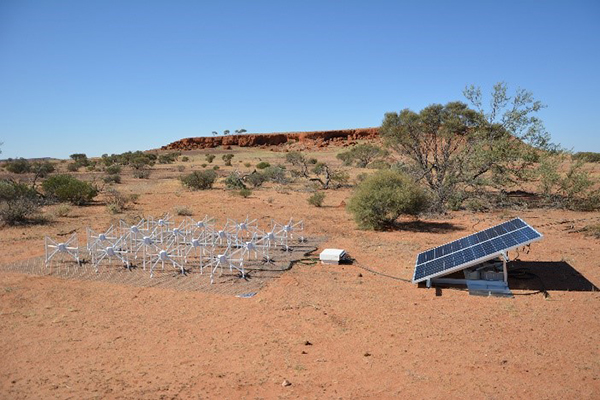
The Murchison Widefield Array (MWA) is one of the two large telescopes situated at the Murchison Radio Observatory (MRO), the other being ASKAP. Both telescopes are precursor instruments to the Square Kilometre Array (SKA), the world’s largest radio telescope, still in the preconstruction stage.
The MWA is run by a consortium of 21 institutions from six different countries, led by Curtin University. The telescope consists of thousands of spider-like antennas arranged in regular grids (known as ‘tiles’) which are spread over several kilometres within the observatory. It observes constantly and autonomously without the need for on-site personnel, and is tuned to low radio frequencies between 50-350MHz.
The MWA is special for its wide field of view and nanosecond time resolution, making it invaluable for quickly mapping the sky and studying rare and faint events as they happen. These characteristics resulted in the ‘Galactic and Extragalactic All-sky MWA’ GLEAM survey, a catalogue of 300,000 galaxies over the full Southern Hemisphere sky. This survey was compiled using MWA data and is one of the largest radio surveys of the sky ever assembled.
Over the last two years, thousands of new antennas have been added to the array, doubling its size and giving the array the flexibility to choose between different sets of antennas to observe with. These different configurations have effects on the characteristics of the telescope and what astronomers can observe, so it is very beneficial for us to be able to change between configurations depending on the chosen science cases.
The array has recently concluded its first observing campaigns with the new ‘extended’ tiles. These tiles are the furthest antennas from each other, up to 6km. This configuration increases the sensitivity of the telescope by a factor of 10, which is extremely useful to observe small scale structures of galaxies. To provide power and signal transport to these remote locations, bespoke fibre interface equipment and solar power systems were designed and installed by the Operations team.
Deployment and commissioning of the extension tiles required a full month on site. Additional on-site assistance and maintenance was provided by Geraldton contractors GCo Electrical, which freed the Operations team to make many small improvements to the array, such as the replacement of amplifiers and receiver fans. As a result, the array has benefited from a consistently high availability and performance in the extended configuration.
Off-site work has continued with the development of new software and hardware for Phase III of the telescope, and new industry collaborations have been forged to locally manufacture hardware and CAD drawings.
The extended configuration campaign collected data from over 5700 hours of observation in support of 31 science projects. Curtin University hosted an event to officially mark the completion of the MWA expansion on April 23, which included a live feed of Operations members on-site at one of the new tiles.
Mia Walker, Curtin University

As this is the first issue of MRO News, we thought an overview of ASKAP might be helpful, followed by an update on recent developments.
ASKAP is CSIRO’s new radio telescope, designed for high-speed wide-field surveys. Its 36 ‘dish’ antennas have a 12 metre wide collecting area which bounce radio waves up into the apex towards special phased array feed or “PAF” receivers. The PAFs have been described as ‘next-generation’ technology and they differentiate ASKAP from traditional radio telescopes. Each PAF has 188 individual receptors which are combined to create 36 individual beams on the sky – a standard radio telescope has just one beam on the sky.
The 36 beams are mosaicked together into a one large single image – kind of like the astronomy equivalent to a wide angle camera lens, or more simply, ‘gigantic eyes on the sky’.
This new expanded capability, means we can now rapidly survey large areas, making ASKAP one of the world’s fastest survey radio telescopes and keeping Australia at the cutting edge of astronomy research and development world-wide.
The science goals of ASKAP are to study the origins and evolution of galaxies in our Universe. Galaxies are the building blocks of the Universe and beyond our own Milky Way, there are billions of others out there. ASKAP will detect tens of millions of galaxies and the hydrogen gas that they contain, on scales ranging from the early Universe to our own cosmic neighbourhood. ASKAP will help us to understand the Universe, not as a picture postcard frozen in time but as a dynamic place that has evolved, all the way from the big bang to the state in which we find it today.
And if you’ve ever wondered why the antennas are spread out across six kilometres, it’s to maximise the quality and resolution of the images.
ASKAP is still being commissioned and we have 28 of the 36 antennas operating, with the rest expected to be complete by the end of this year. CSIRO is planning to commence full ASKAP-36 survey operations in early 2019.
The image pictured to the right shows one of our neighbouring galaxies, the Small Magellanic Cloud. This image was made using 16 of ASKAP’s 36 antennas. The image is three times more detailed than anything seen before and was made 100 times faster than using a traditional radio telescope. It’s an exciting demonstration of what we can expect when the full array comes on line in the New Year
Annabelle Young, CSIRO
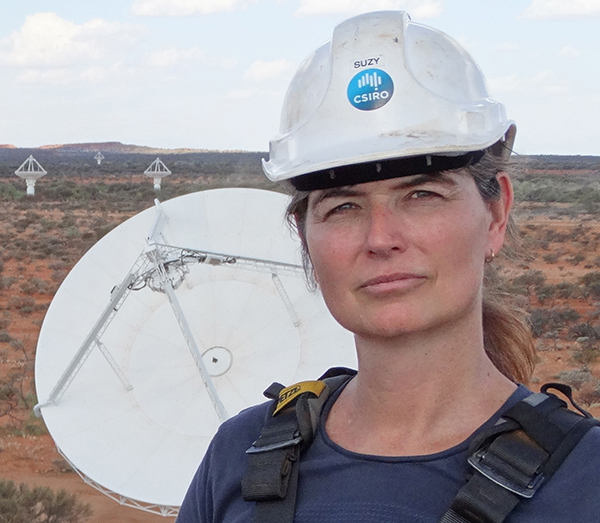
Hi, I’m Suzy. I’m one of about a dozen permanent CASS staff who fly or drive out to Boolardy from Geraldton each week to work on ASKAP. Brett and I are engineers, along with Tom, Ryan and Kurt, and we have a dedicated team of techs who do all the install and maintenance activities on the telescope; Alex, Steve, James, Michael, John, Lou, Ryan and Will. It’s quite a team.
My days are spent working in the correlator room at the MRO installing and fixing the thousands of delicate electronic parts that combine all the signals from the 36 dishes to make pictures for our astronomers, or else working up in the air in our EWP on the phased array feed receivers on our dishes. It’s a big job and we’ve got a great team to do it.
One of the highlights of Boolardy life is the recent addition of new digs at the temporary accommodation at Boolardy. The prospect of six new rooms in two dongas had staff salivating at the prospect of shiny new (bigger!) rooms, with endless discussion of the benefits of a queen bed versus a sofa. We’re thinking we really need a site magazine, which of course would have to be called Better Homes and Dongas, to capture all our decorating ideas.
Look out for us on the road!
Suzy Jackson, CSIRO
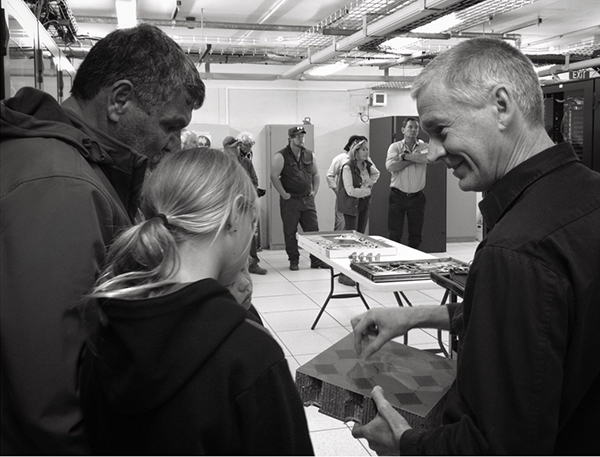
Mid West Businesses visit the MRO
On Tuesday 20th March 2018, CSIRO provided the opportunity for a number of the Mid West businesses and organisations to visit the MRO. Approximately 30 visitors travelled to the MRO for a day visit by return-bus to Geraldton. With only a few of the visitors having been to the MRO previously, the visit was particularly worthwhile in providing a good understanding of the facility and site, for the vast majority that joined the tour.
Murchison Shire Residents Open Day
On Friday 14 September, our local neighbours from the Murchison Shire (pastoralists and shire staff) were welcomed to a special “Open Day” at the MRO. Around 25 people attended. Some have done contract work for us in the past, and some had never been to the MRO but they are our closest neighbours and we have got to know some of them well over many years.
The day started with morning tea and Brett Hiscock, MRO Site Manager welcomed everyone to the Observatory. After a brief HS&E overview we went for a walk to the ASKAP core. Anthony Dann and his grand-daughter delivered the Welcome to Country and talked about well-known Wajarri families such as the Simpsons and Merrys, who have lived in the area for many generations and worked on many of the stations in the area.
Brett explained the operation of the ASKAP antennas and in particular the PAFs, which provide a unique wide-field view of the sky. Suzy Jackson kept the younger visitors entertained with antenna driving lessons! We then returned to the control building where Suzy and Shaun Amy discussed various aspects of the instrumentation, infrastructure, computing and networks.
After lunch, it was off to the MWA where Brett and Shaun talked about the low-frequency capabilities of MWA and the work being done to support the design work for the SKA1-LOW telescope. The numbers for SKA1-LOW really got people thinking!
The day concluded with a brief visit to the hybrid diesel/solar power station. Our neighbours were surprised to see the number of solar panels tucked away in the bottom corner of the MRO.
By all accounts the day was a great success.
Shaun Amy, CSIRO
100 Astronomers Gather in Geraldton
In the first week of October, almost 100 astronomers will gather in Geraldton for the annual CSIRO Radio School. This year the event is being co-hosted with ICRAR and students are being given the opportunity to visit the MRO! Participants will spend the week gaining a thorough introduction to radio astronomy principles and work directly with data from ASKAP and the MWA.
Fourteen lecturers from CASS and ICRAR are scheduled to give talks, with four visiting lecturers; including Ian Heywood, Oxford University, André Offringa, ASTRON, The Netherlands, Rick Perley, NRAO, USA and Tim Shimwell, Leiden University.
Karen Lee-Waddell, CSIRO
MRO Open Day
Closely following the radio school, on the 5th and 6th of October, CSIRO is excited to announce its first MRO Open Day event for the general public. Buses departing from Geraldton and the Murchison Shire, will take 100 people each day on tour of the Observatory, stopping to see the telescopes, the infrastructure and the awe-inspiring Murchison landscape, along the way.
Tour highlights will include CSIRO's 36-dish radio telescope, the Australian Square Kilometre Array Pathfinder (ASKAP), the Curtin-led Murchison Widefield Array and the high-tech signal processing equipment, in our purpose-built MRO Control Building!
Bookings are open now and seats are limited and site access is strictly limited to pre-booked bus ticket-holders only.
For further information, visit CSIRO's event website here its www.csiro.au/MROOpendays
Annabelle Young, CSIRO